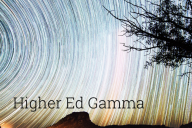You have /5 articles left.
Sign up for a free account or log in.
Over the past century, each generation has generated its own slang. During the 1920s, catchphrases included “23-skidoo,” “the cat’s pajamas,” “hotsy-totsy,” “the bee’s knees” and “the real McCoy.” The 1930s brought “gig” to describe a job, “skivvies” for men’s underwear and “I’ll be a monkey’s uncle.” The ’40s introduced such words and phrases as “blockbuster,” “keeping up with the Joneses” and “smooch”; the ’50s, “boo-boo” and “daddy-oh”; the ’60s, “groovy,” “hippie” and “bread” (as a synonym for money). Then, there are more recent examples: “mind-blowing” in the ’70s, “chillin’” and “yuppie” in the ’80s, “diss” and “my bad” in the ’90s.
Many words and phrases were borrowed from various otherwise marginalized subcultures. From the jazz scene, there came such words as “gig,” “icky,” “far-out,” “square,” “jam,” “cool” and “weed.” From the criminal underworld came “boost,” “bum steer,” “fall guy,” “undercover,” “third degree,” “tailed,” “swipe,” “snitch” and “stool pigeon.”
Black culture and African American Vernacular English have long been a key contributor to the language. As the computation linguist Chi Luu observes, “Perhaps no other variety of speech has been quite so significant, innovative and influential to the development of standard American English.”
Gays and lesbians, too, as Luu has demonstrated, invented “their own language to talk with each other, hidden in plain sight.” This language was “cobbled out of the threads of the secret ‘anti-languages’ used by subcultures on the very edges of society, the low slang used by thieves, itinerant sailors, fishmongers, travelling circus performers, beggars, prostitutes and (of course) theater people … It creatively mixed in elements from Elizabethan thieves’ cant, the Italian-influenced carnival speech Parlyaree, Cockney rhyming slang, backwards slang, Yiddish and Lingua Franca, the sailors’ argot.” Gays and lesbians also led the way in the introduction of camp, the ironically theatrical sensibility, into the broader culture.
Language is never static. It’s constantly changing, evolving and adapting. As the Linguistics Society notes, verbs get transformed into nouns and vice versa. Prefixes or suffixes get added. Words from other languages are borrowed. Words are combined (like “brunch” for breakfast and lunch), or shortened (think “gym” for “gymnasium”), or made out of proper nouns (like “Levi’s”). At times, words deemed offensive or archaic are banished.
To say that language shifts is not to say that it degrades or becomes corrupted. Rather, languages evolve in certain common ways. These include trends toward economy and efficiency, with more complex terms and phrases often replaced by those that are simpler, and toward new modes of expressiveness, as older words and phrases lose their punch.
Language change takes place across multiple dimensions. There are phonetic changes—that is, shifts in pronunciation. There are also lexical changes, in vocabulary; semantic changes, in words’ meaning; and syntactic changes in grammar and sentence structure. There is also a tendency toward standardized spelling.
We are currently in the midst of a radical reinvention of English. Not perhaps since the 15th, 16th and early 17th centuries has the English language shifted faster, with the rapid introduction of loanwords (borrowed from other languages), neologisms, buzzwords, slang and a host of acronyms.
Why, we might ask, is the language shifting so rapidly?
In part, this results from the introduction of new technologies, products and experiences that require the invention of new words. The pandemic, for example, was a source of many new words and phrases: “booster,” “contactless,” “emergency use authorization,” “social distancing,” “subvariant.”
Partly, it’s due to the intricate interplay of various societal domains, each with its own specialized vocabulary.
Some changes in language are products of business-speak, the “jargon used by executives to elevate ordinary functions and conceal ugly truths.” Think of such phrases as “return on investment,” “best practices,” “bleeding edge,” “blue sky thinking,” “boil the ocean,” “core competency,” “hard stop,” “leverage,” “move the needle,” “reinvent the wheel,” “tiger team” or “trim the fat,” which have been gradually adopted across the nonbusiness world. The adoption of business-speak reflects the growing dominance of business thinking in diverse realms of neoliberal life.
Finance, in particular, has its own lingo, which has also percolated across the culture. Here, I refer not just to finance’s technical vocabulary (like “amortization” or “assets” or “capital gains”), but such phrases as “acid test,” “burn rate,” “Chinese wall,” “golden handcuffs” or “golden parachute,” “moral hazard,” “plain vanilla,” and initialisms, like “ROI.”
Then, there’s techno-speak, the buzzwords, esoteric language and technical jargon associated with the tech industry. Alongside highly specialized terms like “A/B testing” or AI, CRM, ERP, SAAS and UX, there are words and acronyms that have been absorbed much more widely, like “back end,” “breadcrumbs,” “content curation,” “dark web,” “minimal viable product,” “sandboxing” and “wireframe.”
There’s also psychobabble, the language associated with pop psychology. Think of such phrases or terms as “acting out,” “addicted,” “bipolar,” “borderline,” “closure,” “co-dependent,” “delusional,” “dysfunctional,” “empowerment,” “mindfulness,” “OCD” (used as a verb), “reptilian brain,” “self-actualization,” “self-medicating,” “trauma” and “vent.”
Journalists coin many popular catchphrases, like “shrinkflation.” Sports is yet another contributor: “A-game” or “GOAT” (greatest of all time). Immigration has brought many new words, such as “bodega.” In today’s environment, marketing’s job is to come up with catchy or memorable phrases, like “retinal display.”
But perhaps the most distinctive drivers of linguistic transformation in our time involve politics—status, social differentiation and disputes over societal norms. Among the most noteworthy developments are these:
- Semantic shifting, semantic expansion and concept creep: Where existing words acquire new meanings. Take, for example, the broadening of the word “trauma” to refer to psychic harm, emotional violence and the invisible forms of damage inflicted by words.
- “Wokespeak” (for lack of a better word): The development of more inclusive or gender neutral or antiracist language that is meant to be more respectful and less bigoted, sexist, racist, rigid or Eurocentric than previous modes of expression. It is all too easy to dismiss such language (“Latinx”) or acronyms (“BIPOC”) as artificial or pretentious or, in some cases, condescending, but these terms represent a genuine effort to create a vocabulary that better reflects commitments to agency, equity, fluidity and humanity. These include the vocabulary involving equity, intersectionality, gender fluidity and identity—words like “systemic inequalities” and “implicit bias.”
- The language of political persuasion: Is it a death tax or an estate tax? A forever chemical or a “per- and polyfluoroalkyl substance”? A child migrant or refugee or an “anchor baby”? There is a growing belief that language offers a way to “manipulate the public and sway them toward particular worldviews.” As Luu explains, the linguist George Lakoff played a crucial role in convincing activists, advocates and politicians about the power of language: “We can be easily swayed by political catchphrases and advertising slogans that are intentionally crafted to convince and direct us into making certain choices.”
- The language of deception: Fears about various forms of dishonesty, duplicity, trickery and deliberate manipulation in communication have generated an ever-expanding vocabulary that currently includes such words as “deepfake,” “denialism,” “disinformation,” “fake news,” “falsification” and “truthiness.”
- Class definition and differentiation: Today, vocabulary, not accent, largely defines class status in the United States. Sure, certain accents (Brooklyn, Appalachian, Southern and Anglo-Texan) are still often treated as déclassé. But those that previously signaled social standing—the high-toned Connecticut, Boston Brahmin and the William F. Buckley–like upper-class mid-Atlantic or transatlantic accents—have lost much of their allure. Instead, facility with key concepts and terminology associated with antiracism, critical race theory and social justice ideology have become signifiers of insider standing, in ways previously associated with familiarity with canonical literature, music and art.
Language not only offers a record of societal transformation, it can also be a weapon. The late linguistic anthropologist Michael Silverstein described the poetics of politics, the use of language “to frame and control the narrative that’s being told, to deflect opposition and obscure information, to bring up positive or negative images—ultimately to further a political agenda.”
Sometimes that language isn’t subtle. Think of such phrases as the “liberal media” or “rabid feminist,” designed to produce a visceral reaction. But the most effective uses of language are subtler and less obtrusive, for instance, using a phrase like “climate change” instead of “global warming.”
As the linguist Allan Metcalf argued in his 2002 classic Predicting New Words, the words and phrases that have the most sustained political and social impact are evocative yet not inherently partisan. Thus, phrases like “pro-choice” and “pro-life” refer to broader outlooks in highly concise language that draws upon widely held values. The term “Frankenfood,” to refer to laboratory-engineered foodstuffs, is at once powerful but readily relatable.
A dictionary may define language as a structured symbolic system of communication, but in our time it’s also a weapon, a marketing device, a tool of persuasion, an insiders’ argot or lingo, and a way to frame reality. Instruction in the power of language is much too important to be left to a class or two in rhetoric and composition.
We need to teach our students to write and speak more logically, clearly and compellingly. We also need to ensure that they understand language’s power: to persuade and to shape perceptions, attitudes, beliefs and emotions.
I find it odd: at a time when most college graduates are expected to be able to use language effectively, when most of us engage in marketing, branding and oral, written and digital persuasion in one form or another, the teaching of rhetoric has radically declined and at some schools has disappeared. Sure, visual communication has swollen, but words and rhetoric remain our stock in trade. Shouldn’t we do much more to demonstrate to our students the power of language and how to use rhetoric more effectively and successfully?



